We make one last stop before leaving the Huasteca Potosina region at the Sotano Golindrinas, or Cave of the Swallows. Falling just six feet short of being 1,000 ft wide at it’s widest point, this air pit cave is over 1,200 ft drop from its highest karst ridge overhead, making it (according to wikipedia) “the largest known cave shaft in the world.” Although swarms of birds are reported, we are there during nesting season, so not much activity is taking place. Still, the cave offers some pretty impressive scenery.

Sotano de las Golindrinas. There is a wicked winding road to get here…I am not sure I would say it was worth it were I doing the driving!

This picture makes me laugh. The only table and chairs on the scenic overlook, and the three youngsters have their faces firmly planted in their phones!

Note “safety harnesses” rented for 20 pesos, about one dollar. I did not get any closer because I was terrified….not of the drop, but of the large dog in between me and the edge that tried to swallow my entire foot! (You can see the ridge of his back along the bottom edge of the photo.)

This guy is operating a “cloud swing,” a long cabled swing that goes out over the canyon. He has a Facebook page. 😉
Our final leg of the circuit brings us over the beautiful Sierra Gorda mountain range where we reach over 9,000 ft in elevation. It’s a twisting, narrow road up and over the mountains. The rugged scenery is beautiful, lush and green on the east side, thick with indigenous pine and cedar trees across the ridge line, and dry arid scrub brush on the west side. This is due to the mountains blocking moisture from the Gulf of Mexico.
We get an early start up over the mountain range because our guide, Eric wants us to sample the Zacahuil, a three foot long tamale, specialty of the Huasteca region. This giant tamale baked in a banana leaf, chocked full of pork and chicken is the breakfast of choice at the roadside stand near the local bus station. Here, a line waits for the steaming hot meat-infused masa to be scooped out, served with a piping hot cup of Avena Caliente, a drink made from ground oatmeal and milk. It sounds dreadful, but it is actually quite good, as the sweet warm milky broth of the oatmeal helps extinguish the heat of chilies in the tamale.
In addition to the scenic mountain drive, our route is also going to take us through two more “Pueblo Magicos,” or Magic Towns, designated as such by their historical or cultural significance. The first of these is towns is Jalpan de Serra, the center of the area known for its Franciscan Missions built in the 18th century, designated as World Heritage Site by UNESCO in 2003.
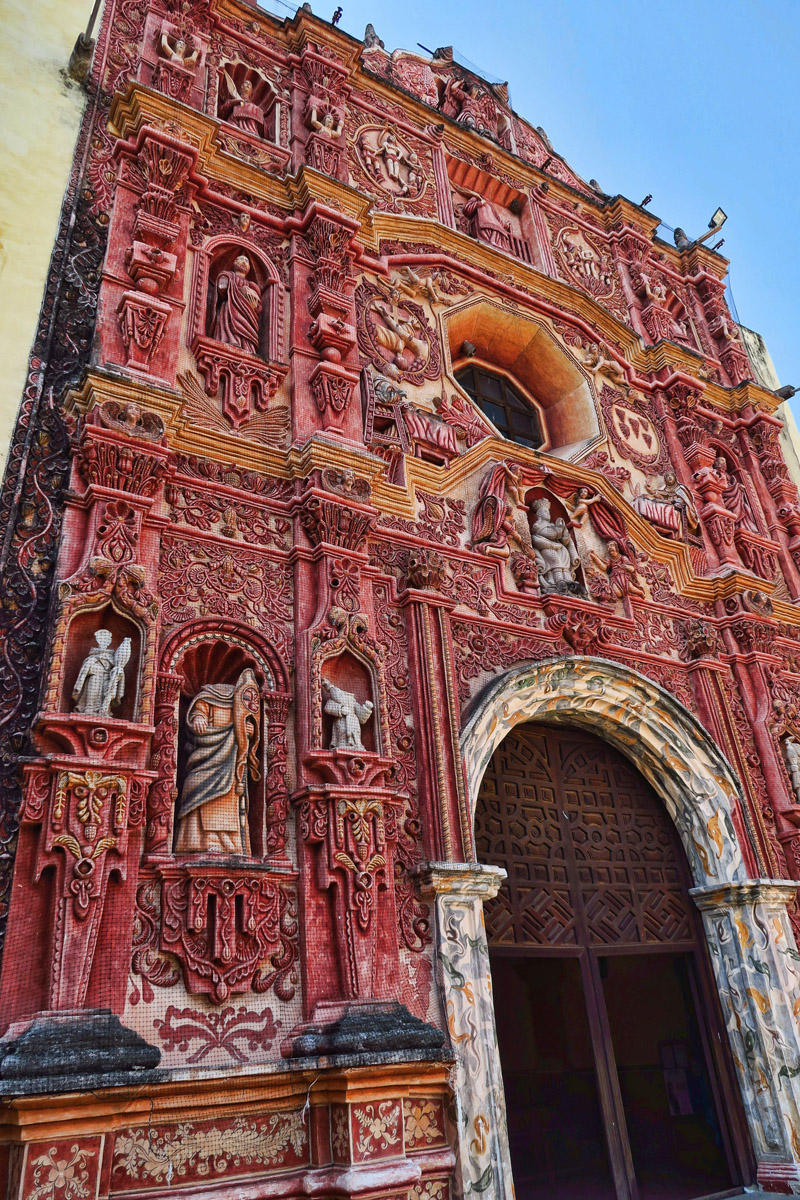
Highly decorative style on the facades of the five Missions of the Sierra Gorda is known as “Mestizo Baroque.”
The founding of the five missions in this area is credited to Father Junípero Serra, a priest of the Franciscan order. You might recognize him as the same priest who founded the majority of the missions in Southern California, most notably San Juan Capistrano, the oldest standing building in California. Father Serra was credited with founding nine of the 21 missions from Baja to San Francisco, though they were built on the backs of the indigenous people. In the case of the Missions of the Sierra Gorda, it was the Pame Indians who did the building through forced labor.
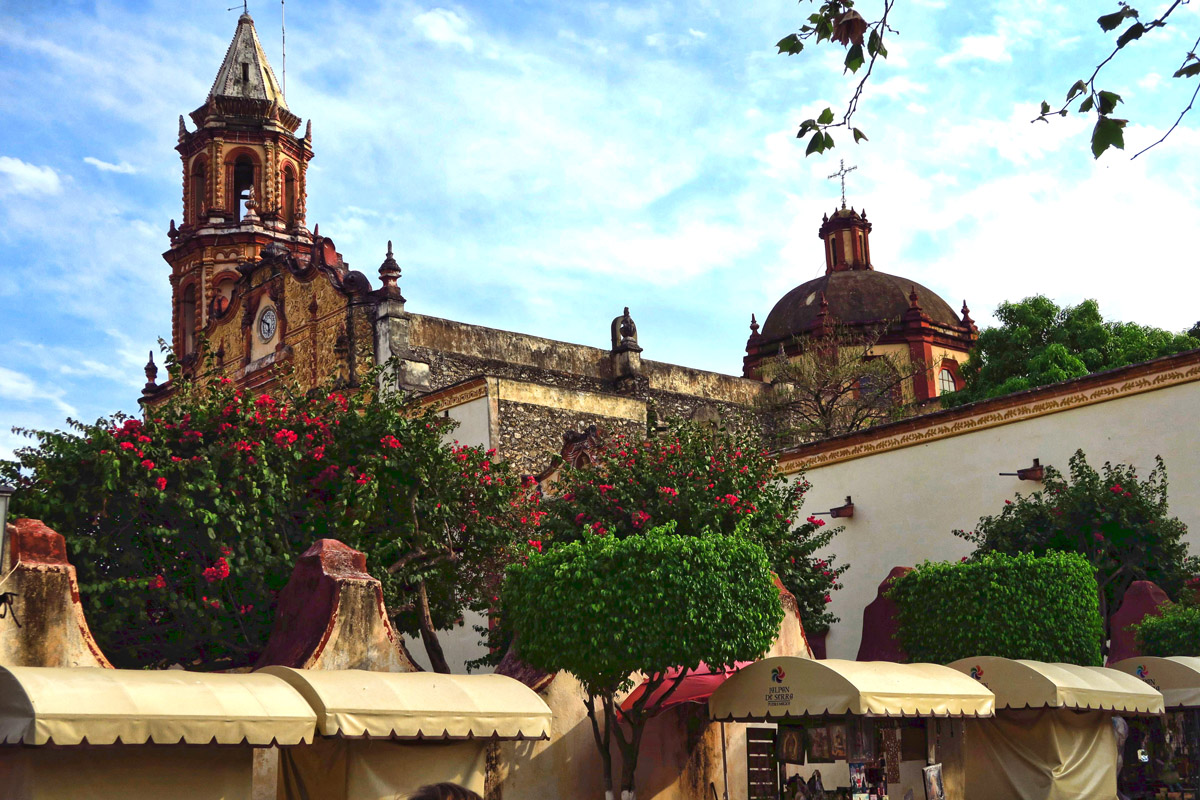
Mission At Santiago de Jalpan, a UNESCO site located in the Pueblo Magico, or magic town of Jalpan de Serra
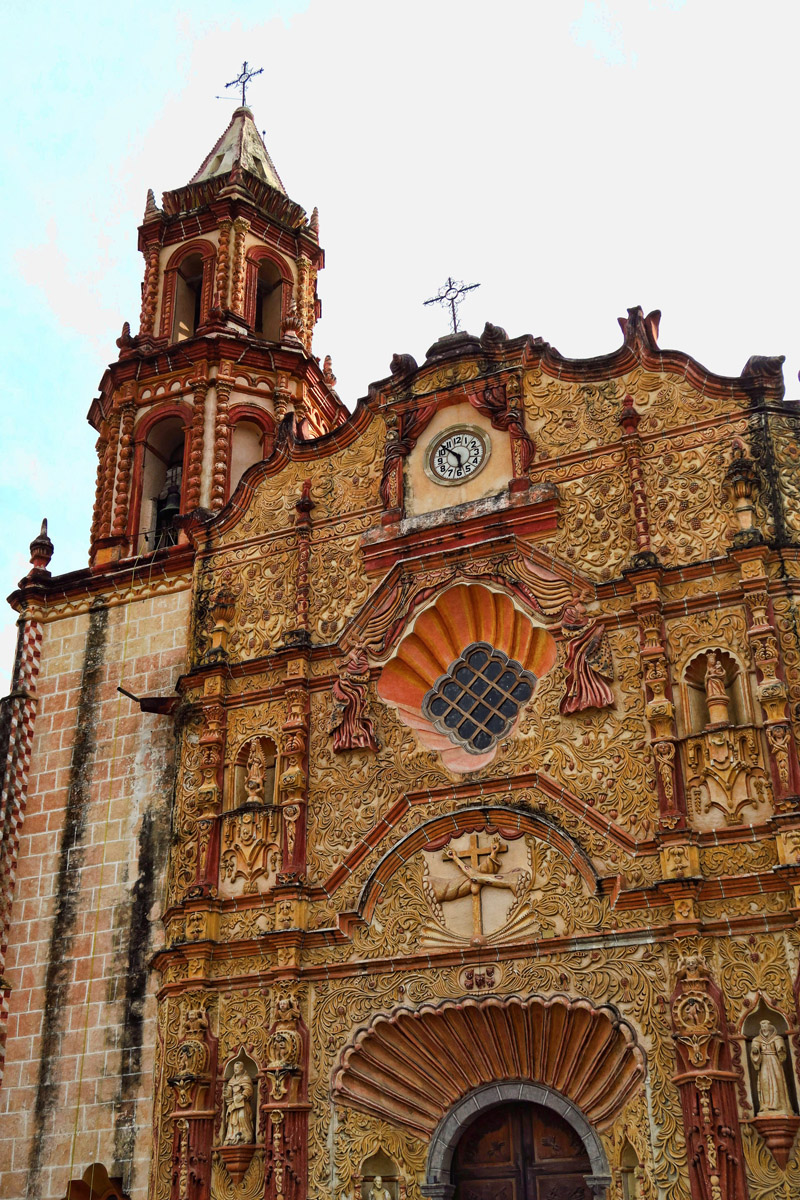
The ornate facade was aimed at teaching the new religion to the indigenous peoples, though since they were built by same, many of the figures have indigenous features.

Though this Saint still has his head intact, some have been beheaded. Souvenir collecting, or religious resistance?
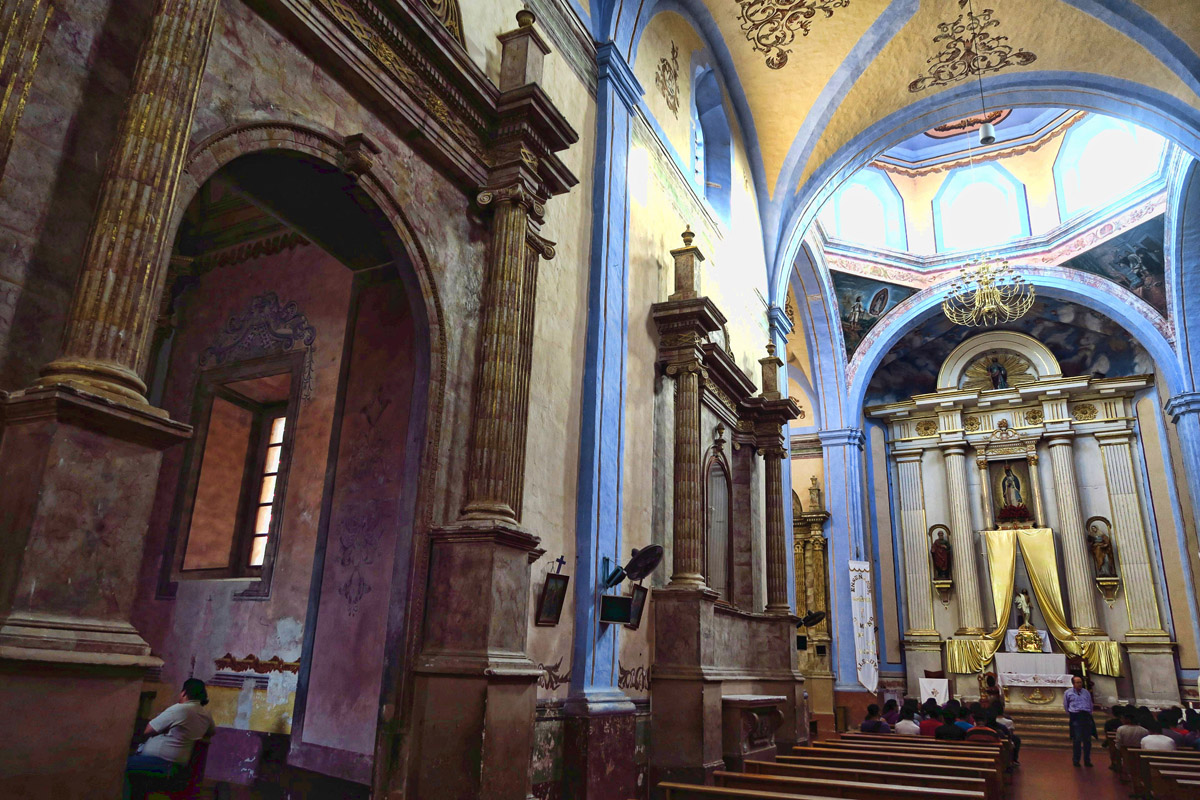
Though the mission was restored in the 1990’s, the building is an impressive undertaking for the mid 1700’s!
The second Pueblo Magico town that we visit on our circle through the Sierra Gorda, Bernal achieved Magic Town status for a completely different reason. The third largest monolith in the world behind Rio de Janerio’s Sugarloaf Mountain and the Rock of Gibraltar, La Peña de Bernal is made from a single stone rising up 1,421 feet.
This “thumb” serves as the center of the town, complete with legends and myths that have earned status as an acclaimed pilgrimage site. A well known rock climbing destination, Peña de Bernal has hiking trail halfway up the rock (we didn’t hike because time was limited) where a tiny one-person cavernous chapel marks the end of the pilgrimage. Climbing gear and a permit are required to continue on to the top.

Many restaurants, hotels, and courtyards in the quaint little town include a view of the Peña de Bernal.

Although Bernal is the “gateway” to the Sierra Gorda’s wine region, there seems to be a lot of craft beer in the area. Wish I had bought this one just for the label!
Bernal is known for its blue corn gorditas, and I can attest they are worthy of acclaim. The most interesting version is the “Nopales en Penca,” or cactus cooked inside a cactus. They split open the giant cactus “paddles” and fill them up with chopped cactus, tomato, onion, then wire them shut and cook on the grill, then use this as filling for the gorditas and tacos. I had to pass on the nopales, though, as I just can’t get past the slimy texture.

Our guide, Eric, takes us to his favorite gordita restaurant. This area is known for Blue Corn Gorditas.
This last stop, Bernal, concludes our circuit through Huasteca Potosina, as we soon rejoin the freeway through Queretaro and on for our two hour drive back to Guanajuato. I am grateful for this opportunity to visit a little-known region of Mexico which would have otherwise been difficult to visit independently. But I am also grateful for the new friendships I made, even if it meant riding over a thousand kilometers and even more topes in the back seat of a bumpy van!

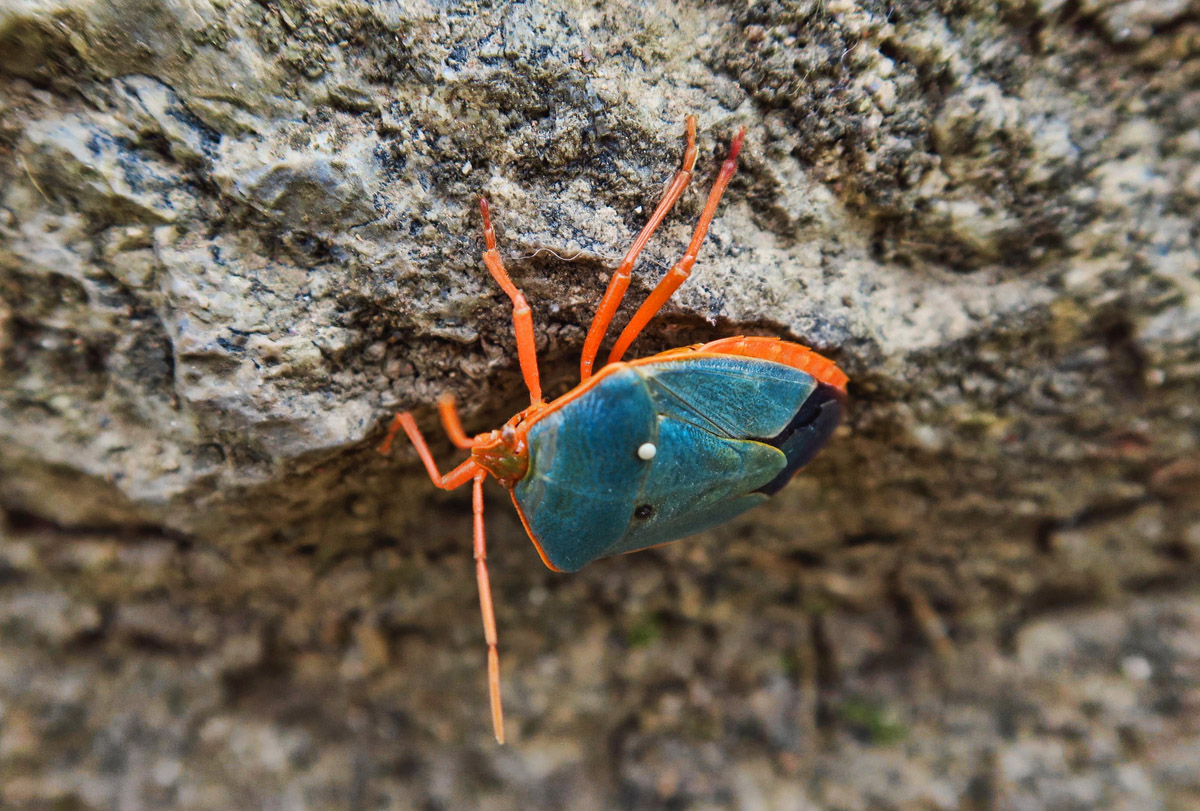

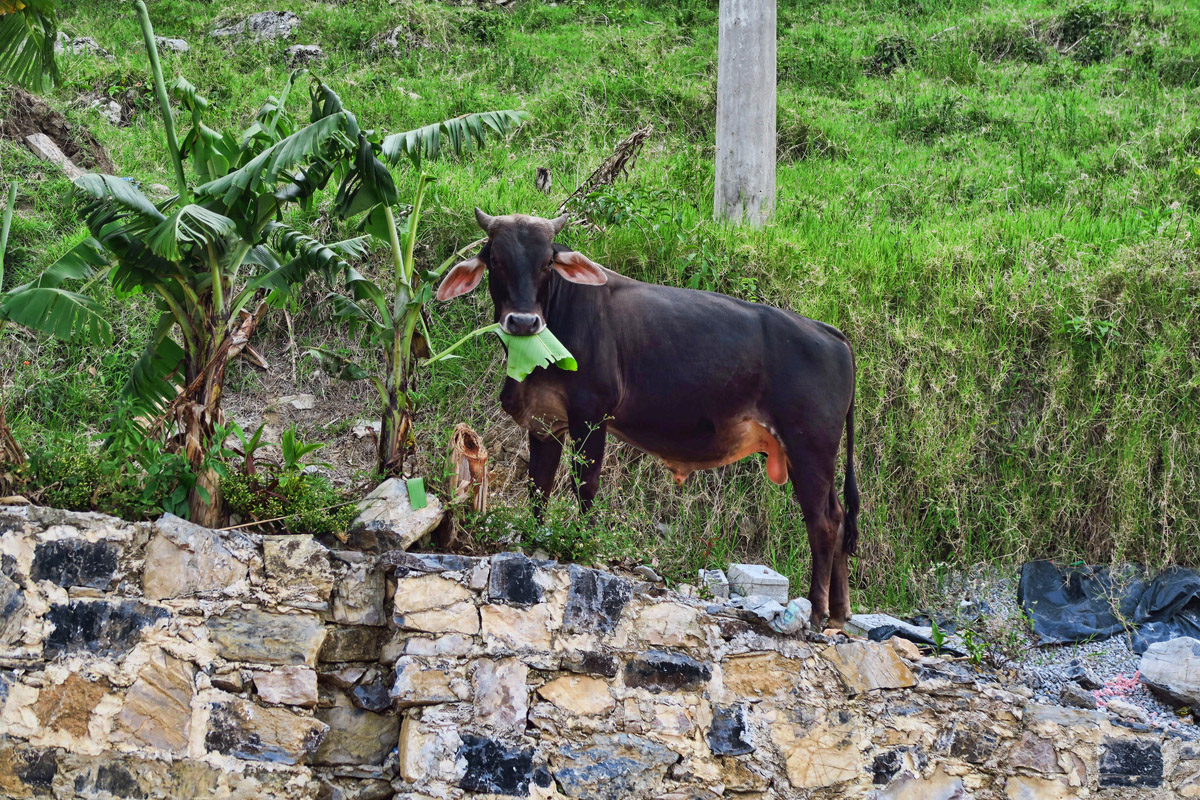




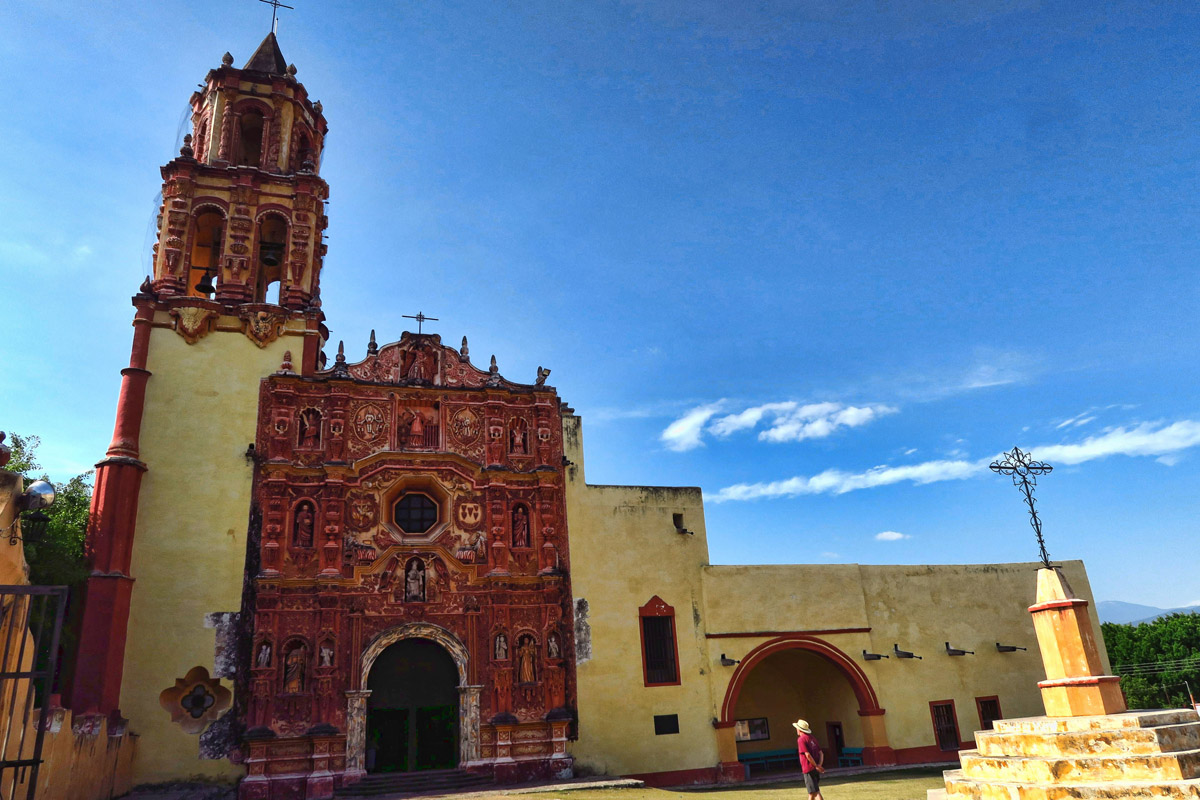





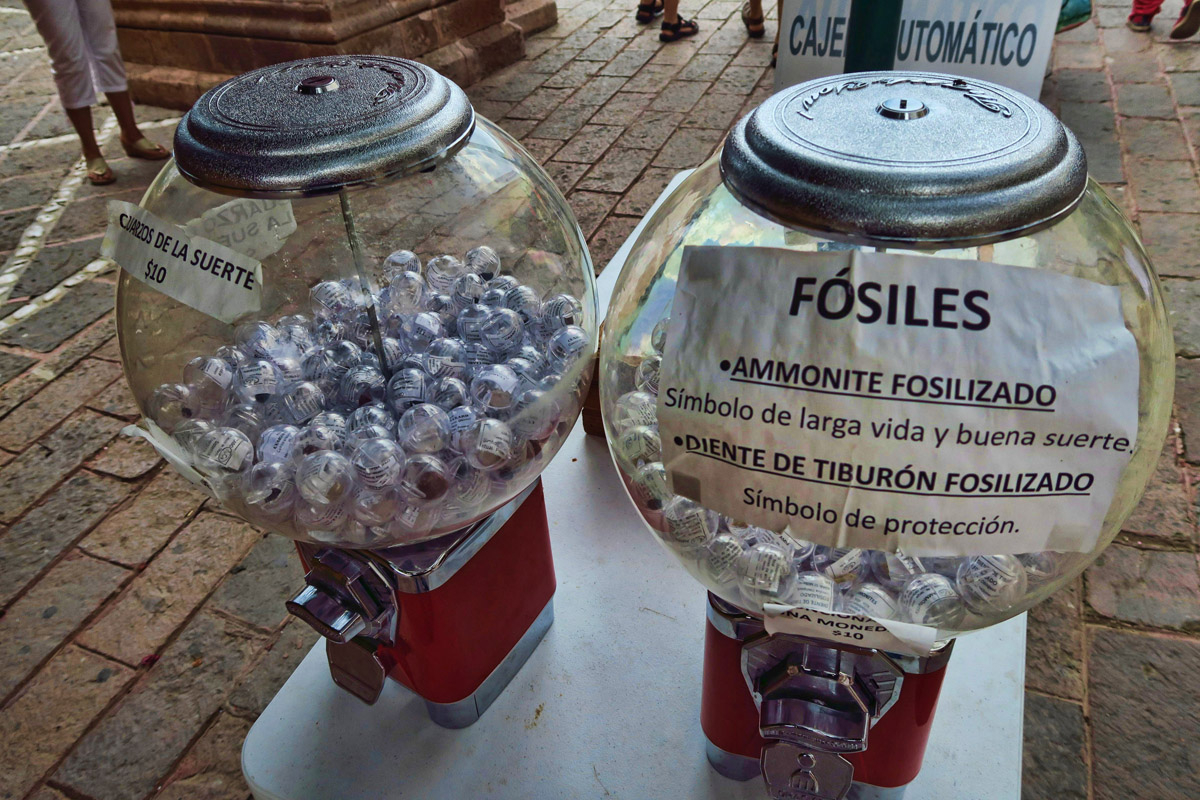







We lived in Tequisquilpan for a month and visited Bernal and took the drive to Illitla. Your blog stirred up some great memories and your writing is just picturesque. Thank you for sharing. We are now reading your book. “alone, but not Alone. Great read
I very much enjoy your beautiful colorful pictures and wonderful descriptions. They make me want to visit places that have never been on my “must see” list. Thank you.
You are visiting country I hadn’t even known about in Mexico. As always your prose and pictures are fascinating. Thanks for the enjoyment.
Looks like a great out of the way tour through some beautiful country. I like it that your guide was tuned in to the local food! It’s been a pleasure to vicariously follow your trip through Mexico.
Two favorite fictional characters from my youth in the mid-60’s are Pippi Longstocking (whom everybody knows) and Little Lotta, the quirky Harvey comic book chubby whose insatiable appetite gives rise to superhuman strength (no mere fattie was she!). With this lovely blog post you satisfied the yearnings of each of these alter ego girls of mine…Pippi loved the Huasteca Potosina map graphic of your wonderfully long and adventurous tour and Little Lotta positively drooled from the photos of the Zacahuil (three feet?!) and that yummy looking Nopales de Penca! I think *my* fav photo is the one of the flower rimmed courtyard in Bernal with the Pena de Bernal rising in the background. As ever, I (and my girls) appreciate tagging along with your grand explorations! 🙂
There’s an awful lot to see and do and not have a repeat. Great photos and story.
The food!!! It all looks so good. Love the colors of Mexico, and glad you are back :).
Box Canyon Mark
So colorful, so exotic. I would love visiting those Magic Towns. The food looks amazing, too. Sounds pretty arduous getting there, but seems like it was well worth the effort.